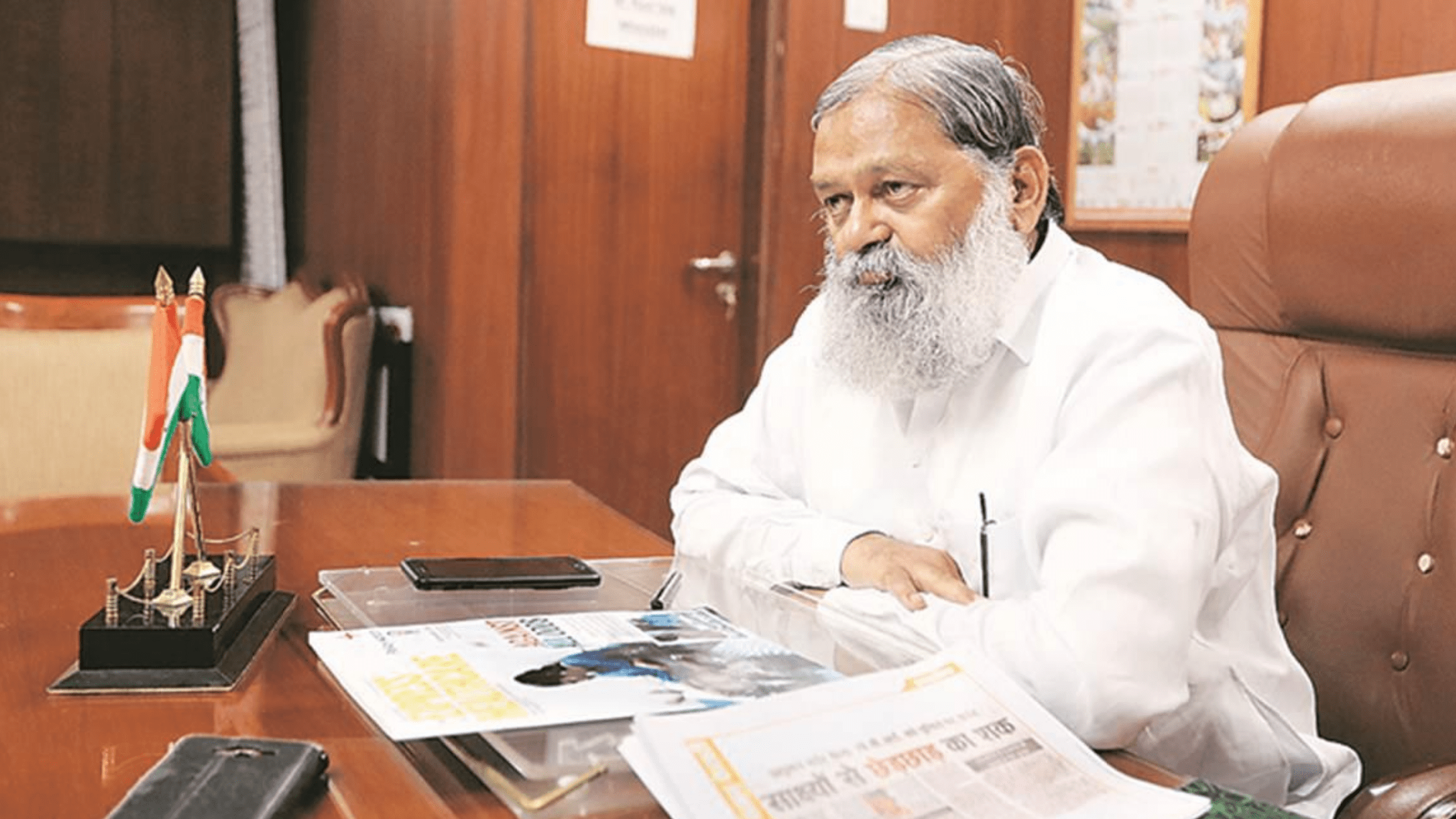Chandigarh, September 4 – Haryana Government has carried out a Survey to find Sero prevalence of COVID-19 in the population of the state in the month of August. Haryana Health Minister Mr. Anil Vij, today stated that this Sero Survey was carried out with the aim to identify the penetration of COVID-19 at the community level and to monitor its transmission trends.
Divulging further details the Health Minister said that, “The survey was conducted in all Districts of Haryana in collaboration with Department of Community Medicine and School of Public Health, Post Graduate Institute of Medical Education & Research (PGIMER), Chandigarh. It was conducted by taking 850 persons from each district including both urban and rural population. A nodal officer was designated in every District to Monitor and Supervise the Sero Survey activity. The Health Department is able to gauge the number of people affected by COVID-19 through this survey,” he added further.
While appreciating the efforts of Health Department, Health Minister, Mr. Anil Vij said, “The Health Department has been on its toes for the last four to five months. The work of the Health Department at State Headquarter and at the District level, for conducting the Sero Survey in such a short span of time is indeed commendable.”
Sharing details of the purpose of the survey, Additional Chief Secretary Health Mr. Rajeev Arora said that the study finding will be useful to guiding in designing Strategies and Implementation of appropriate containment measures in Haryana.
“A Sero Survey is about testing a group of individuals for presence of antibodies as it helps in understanding the number of people affected by the disease. The study helped us to determine the burden of COVID-19 at the community level in the State and monitor the trends of transmission of SARS-CoV-2 (COVID-19) infection.” he added further.
While revealing the Sero prevalence results in detail, he mentioned that total 18905 samples were collected in whole of the State following all safety measures and other lab standards and Sero prevalence study show that overall Sero-positivity of SARSCoV-2 in the State of Haryana is 8%. He further added that urban population was affected more than the rural population. The SARSCoV-2 Sero-positivity observed in Urban area is 9.6% and in Rural area is 6.9%. NCR Districts are having high Sero-positivity like 25.8% (31.1% in Urban and 22.2% in Rural) in Faridabad, 20.3% in Nuh, 13.3% (18% in Urban and 10% in Rural) in Sonipat and 10.8% in Gurugram (18.5% in Urban & 5.7% in Rural).
Higher Sero-positivity than the State average (8%) is also noticed in some other districts like Karnal 12.2% (17.6% in Urban and 8.8% in Rural), Jind (11%), Kurukshetra (8.7%), Charkhi Dadri (8.3%) and Yamunanagar 8.3% (5.9% in Urban and 9.9% in Rural).
The districts of Haryana which are having lower Sero-positivity than State average like in Panipat 7.4% (7.8% in Urban and 7.2% in Rural) & Palwal (7.4%), Panchkula 6.5% (3.7% in Urban and 8.5% in Rural), Jhajjar (5.9%), Ambala 5.2% (7.1% in Urban and 4.4% in Rural), Rewari (4.9%), Sirsa (3.6%), Hisar 3.4% (2.3% in Urban and 4.4% in Rural), Fatehabad (3.3%), Bhiwani (3.2%), Mahendragarh (2.8%), Kaithal (1.7%).
Mr. Arora emphasized that although Sero-positivity is higher in NCR districts as compare to non-NCR districts, the reason for the same could be high density of population due to urban slums, multi-story buildings and daily movement of large population in NCR region.
He further emphasized that 8% population of Haryana has developed antibodies, low prevalence findings can be attributed to the proactive efforts taken by the Government to prevent the spread of infection including prompt lockdown, effective testing strategies, effective containment and surveillance measures including contact tracing and tracking. It also shows citizen’s compliance to COVID-19 appropriate Behaviors like physical distancing, following good hand hygiene and cough etiquettes etc. The study also clearly points out that the measures taken by the State have been successful in keeping the transmission low and in preventing rapid spread of COVID-19. It has been observed from findings that risk of spread is higher in urban areas as compared to rural areas. This only means that a larger portion of the population must continue following COVID appropriate behavior suggested by Health Department from time to time.
The Director Health Services IDSP, Dr. Usha Gupta said, “The study was conducted in month of August in all over Haryana. Survey teams were constituted for all the 22 Districts and 850 samples were collected from each district covering both urban and rural population.”. Revealing further details Dr. Usha Gupta said, “A stratified multistage random sampling technique was used. Total number of 16 clusters i.e. 12 rural and 4 urban clusters were randomly selected for taking samples. Blood samples were collected from selected individuals after taking written consent and then their sera were tested for IgG anti-bodies using ELISA test kit approved by Indian Council of Medical Research. The said Survey is one among the largest Sero prevalence studies conducted in the country using ELISA testing. The data of the survey was collected by using digital tool i.e SurveyMan App which was finalized by Dr. Arun Aggarwal, Professor, Department of Community Medicine and SPH, PGIMER, Chandigarh. This tool helped to fetch the real time data of survey along with the location of survey team. This IgG antibody testing method is not a diagnostic testing tool but it only provides information about past infection due to SARSCoV-2 in individual”.
Considering the fact that only 8% of the population of Haryana has got the infection of COVID 19 at some stage, this signifies that still majority of population is still vulnerable for COVID-19 infection. Therefore, all containment measures need to be continued with the same rigor. Further other non-pharmacological interventions such as physical distancing, use of face mask, hand hygiene, cough etiquette and avoidance of crowded places etc., must be followed strictly and must not be overlooked”.
According to the Director General Health Services, Haryana Dr. S.B Kamboj,” as on today COVID-19 case load has increased to 68218 while the death toll rose to 721 in the State of Haryana” as on 2nd Sept, 2020.

 हिंदी
हिंदी






